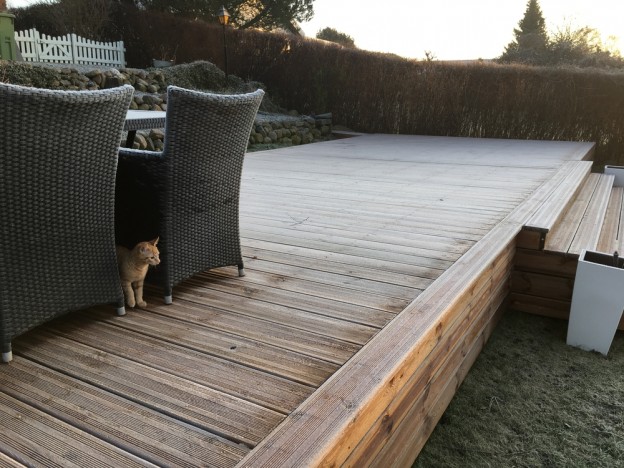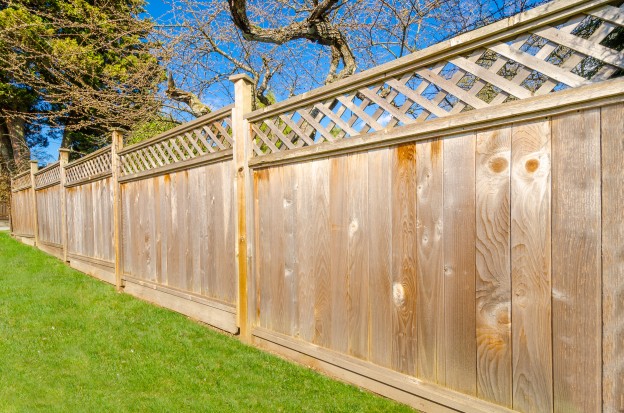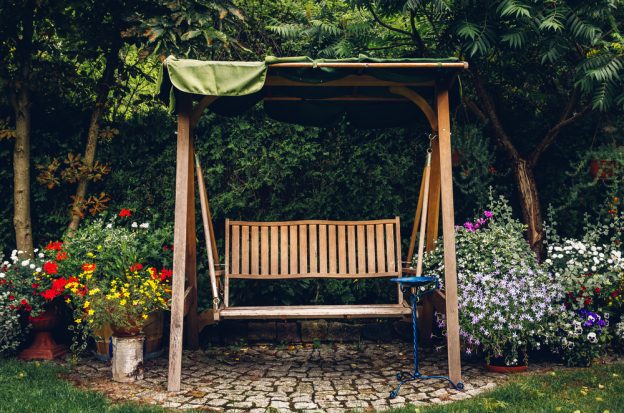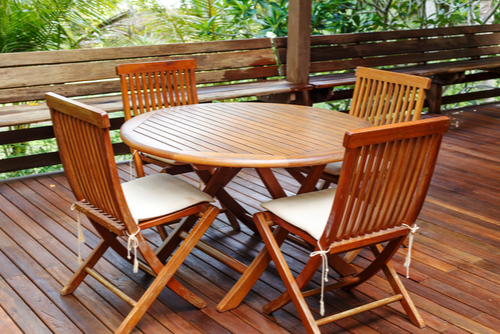Depending on how long you want to keep it, wooden garden furniture can be a serious investment. While some customers choose to buy new furniture pieces every year, most decide to keep our products in their gardens for years. And while our products have been carefully treated to extend their life times, there are some important steps you can take to care for your wooden garden furniture.
In order to keep your wooden furniture looking good for as long as possible, we’ve compiled this brief guide.
Keeping Your Wooden Furniture Covered Up
Depending on the time of year it’s very likely that your wooden garden furniture will be left to the elements for weeks and months at a time. As well as moss and insects (which we’ll discuss lower down) this can attract wood rot — a fungus which grows into damp wood and slowly devours it. If left untreated, wood rot can lead to a situation where your furniture is totally unusable.
While there are a number of products you can get to treat your wooden furniture, the easiest way of keeping it free from wood rot is to keep it covered and away from moisture. The best material to do this with is a large plastic tarp sheet — preferably a translucent or transparent one. This will allow light through and discourage insects from nesting on your furniture.
While covering your furniture won’t totally keep it free from insects and other plants, it’s a big part of keeping your furniture looking pristine for as long as possible. To learn how to keep your wood free from insects and other pests, scroll down.
Keeping Your Wooden Furniture Free From Pests
By far the most important part of maintaining your wooden garden furniture is making sure it’s free of pests.
As previously mentioned, depending on the time of year, it’s very likely that your furniture will be absorbing a lot of moisture from the rain — which will attract a number of pests and make it the ideal home for moss. The UK is home to multiple species of insects that live and feed off wood — including Wood Boring Weevils and the Death Watch Beetle.
Because of this, it’s important to treat your furniture every so often. We recommend you only use green insecticides and pesticides on your furniture. This is because these products keep your wood free of insects without harming any insects that want to make your furniture their home. Likewise, only using green pesticides will save the rest of your garden from any possible cross contamination.
It’s important to read the instructions before applying any pesticide and insecticide. Do not use your wooden furniture immediately after using any pesticide or insecticide products. Read more information on why it’s a good idea to use green pesticides.
Keeping Your Wooden Furniture Clean & Looking Good
The final part of keeping your new garden furniture looking good for as long as possible is to make sure it’s cleaned to a good standard. You don’t need to clean your wooden furniture too often — especially in Autumn or Winter. Typically, it’s a good idea to give it a deep clean at the start of Spring and then again every couple of months, until the weather starts to turn.
Your wooden furniture isn’t hard to clean. All you need is a couple of things:
- Sandpaper
- Hot water
- Soap
- Bucket
- Sponge
- Hardwood cleaning fluid
To start with, pour the hot water and the hardwood cleaner together into the bucket, making sure you follow the instructions provided in order to get the ideal mix.
Use your sponge to cover your garden furniture with the water-hardwood cleaner mix — making sure to cover the entire surface. When you’re done, leave the furniture to dry. Depending on the temperature and weather conditions, this may take up to several days.
When your furniture is fully dry, take your sandpaper and gently apply it to the surface of the piece. Not only will this keep the surface of your furniture looking fresh and free of ugly blemishes, but it will also make sure that pests will be kept away.
You may have to repeat this process before you get the desired effect. You may also need to sand the surface of your furniture more than once depending on your desired effect.
Depending on your preferences, you may wish to let your wooden furniture age naturally. If you decide this is for you, we encourage you to use hardwood oil after sanding your furniture. This will preserve that natural palatina look that comes with age.
Contact Us
If you have any further questions about how to care for your wooden garden furniture, contact us today and we’ll be happy to answer any questions you may have.





